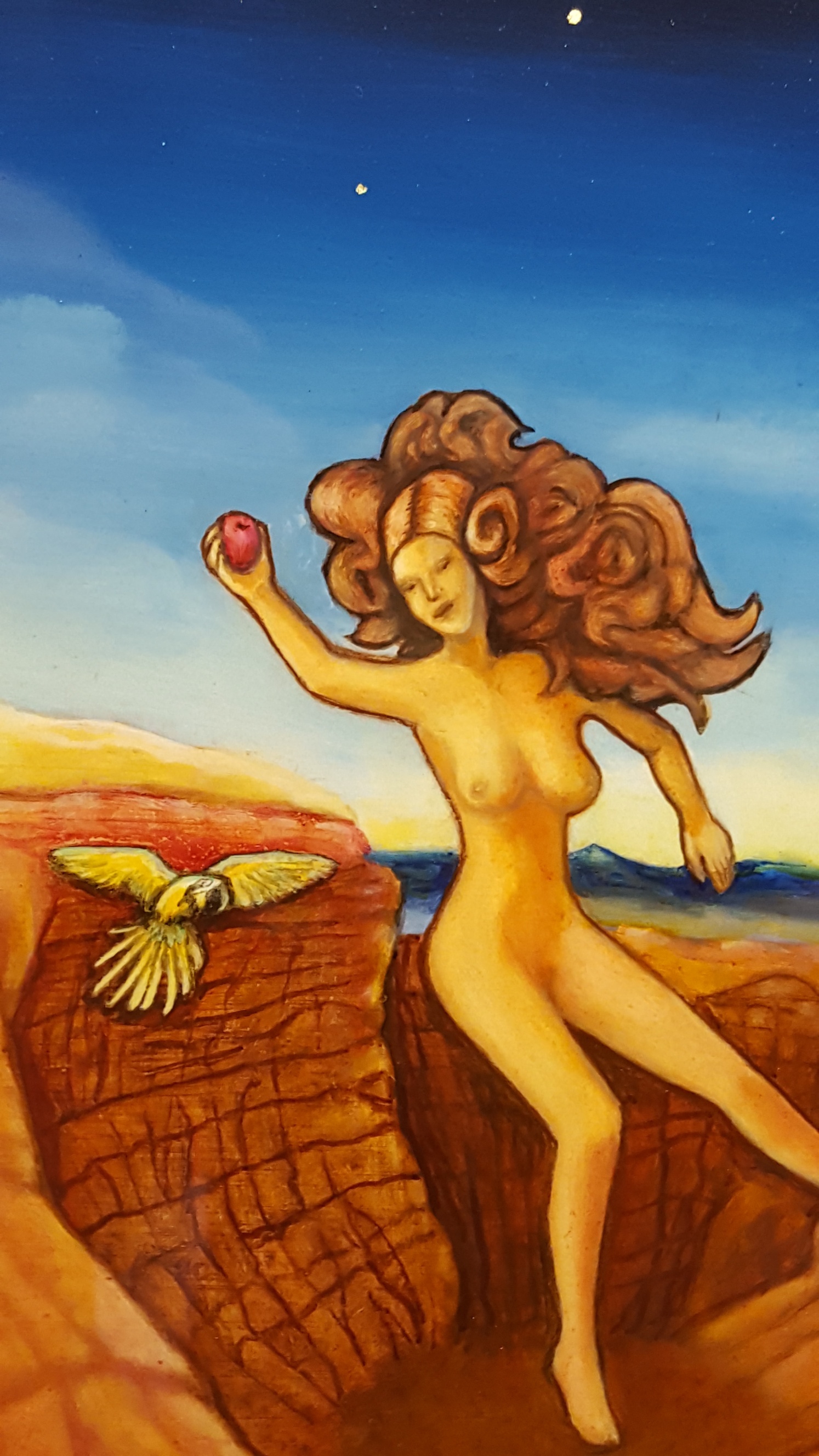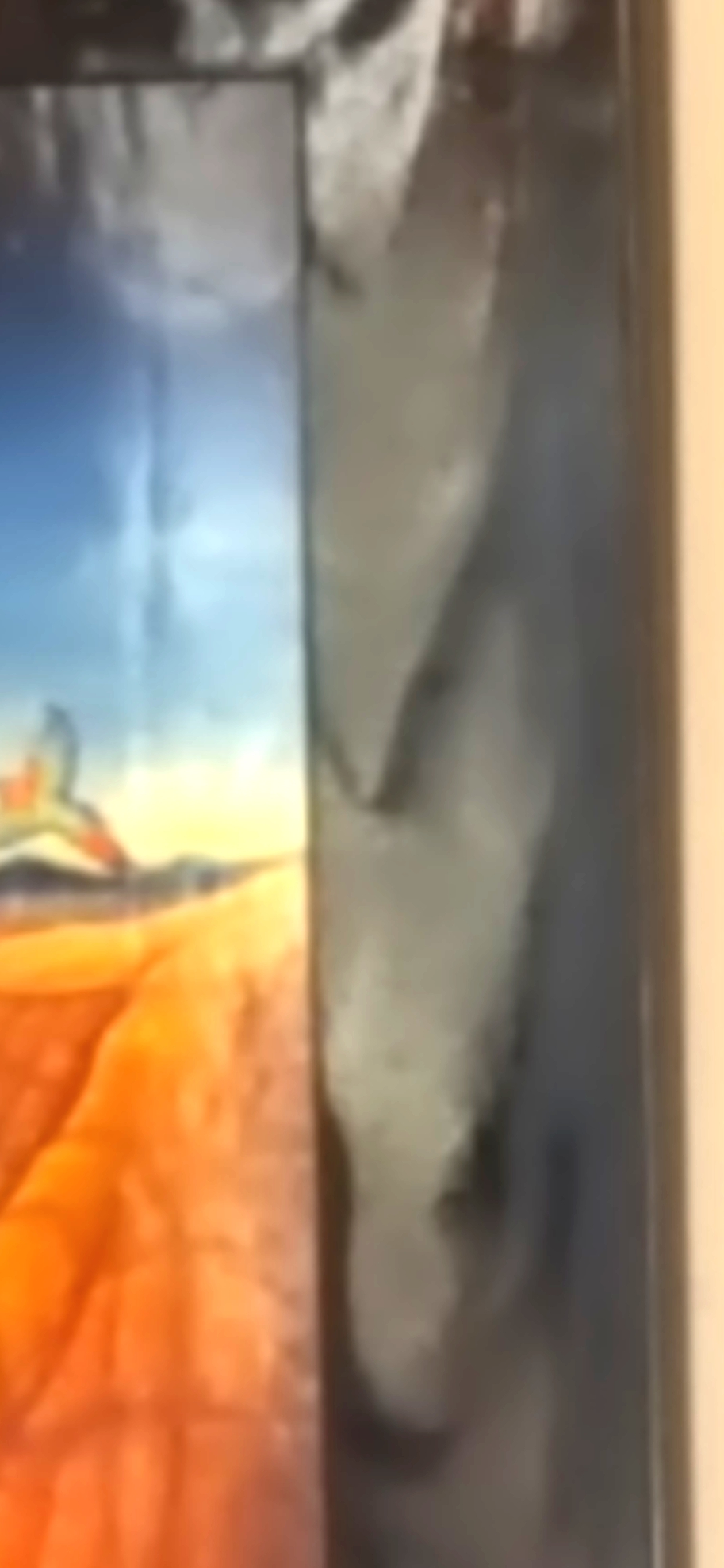
The Apple Snatcher
11 3 19 12x16" oil on panel
in Sugar Pine lacquered frame
"She floats like an apparition captivating the souls of voyeurish men like a seductress dancing the
hooley-gooley, radiant in her selfish splendor".

detail of figure with parrots

detail of figure with parrot

detail signature


On the living room wall, showing reflections in frame...
I used sugar pine, instead of bass wood....about the same hardness as bass wood.
It is an interesting wood for the
frame, as it has a tendency to sand out the softer
parts of the pine, leaving some peaks and valleys, under the lacquer.
These add a general similarity to the rock formations here in the desert.
It is a very suble effect, but
in the reflection, as you walk by, it becomes obvious.
Lacquer? Yes, acrylic automotive lacquer...old school.
Still available in spray cans. It sets up very fast and
I easily build up six coats that are very glossy.
Will wait a few months and wet sand it with 600/1200 and polish with
rubbing compound to get a lasting mirror finish on the wood frame.
I have used this method many times over the years and the
finish holds up superbly over time.
By waiting a month or so, the wood will shrink just a bit,
revealing more of the inundated 'rock like' texture under the lacquer.
Now the painting, itself...I use a top quality clear
acrylic urethane ($$), two part, that is used in the auto
refinishing industry that does not yellow
over time. Spray can clear urethane does yellow, I have seen.
This expensive auto clear does not yellow, as they use it for the
hoods of very expensive automobiles.
I brush on three heavy coats with a 1" flat Nocturna lettering brush
and lightly 400 wet sand between coats.
It sets up 'wet sandable' in an hour and after two days is rock hard.
Keeping the dust out of it is a challenge.
The result is a deep, lusterous finish, much like lacquer
and has no effect of the artist oil paint beneath....no lifting.
Do not thin with acetone as it will lift or wrinkle the oil paint beneath.
I wait a few days before applying the clear to let the oil paint set hard.
I like using 3/16 masonite panels that I gesso with three coats and sanded smooth
out to 150 grit, before beginning the drawing in light pencil. (easily erased drawing changes)
I find sealing out the back of the masonite panel with the
clear, eliminates the worry sbout water expanding the fibrous panel.
Masonite? Ralph Mayer in the "Artist Handbook" advises using untempered
masonite, claiming the tempered has some residual formaldahyde venting in it.
I buy mine from an old yard here that sells very little of this, so it has vented already.
I buy a 4x8 sheet of it and it stands vertically for another few months, before I cut the panel I need.
Been using these masonite panels for 25 years and have never seen any problems....
no lifting, pitting or any change in the colors, other than if the bare
back gets wet, causing water damage to the panel.
500 years from now, I guess we will find out?